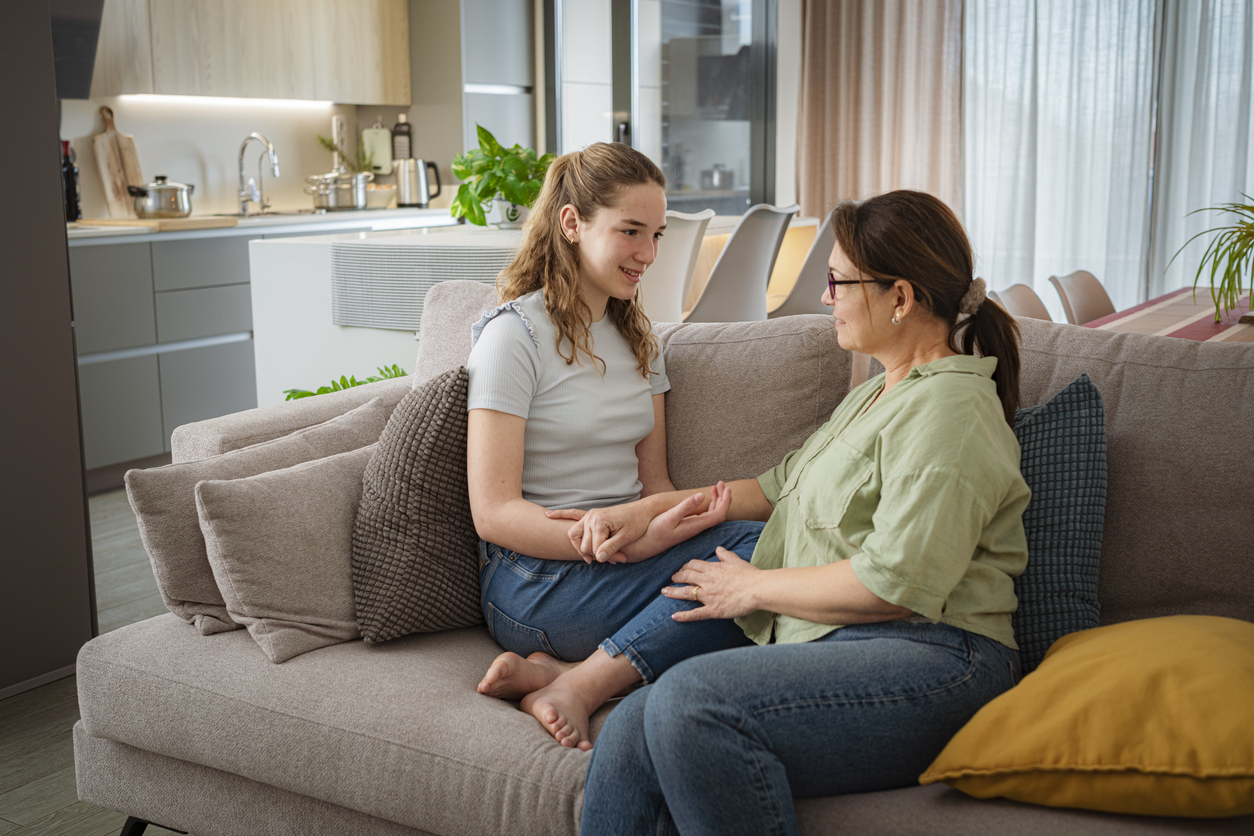PTSD in adolescents can result from traumatic events such as abuse, accidents, or witnessing violence. Symptoms include intense anxiety, flashbacks, nightmares, and emotional numbness. An early intervention is important, because PTSD can lead to long-term emotional and behavioral issues. Understanding the signs and seeking professional help can significantly improve an adolescent’s mental health and well-being.
Seeing your teen struggle with intense anxiety, flashbacks, and nightmares can be heart-wrenching. Sadly, there’s no way to take away your child’s pain, or place their burden upon yourself. But you can steer them toward a path of better coping, and long-term mental wellness.
Treating PTSD in teens or adults can be a difficult road, but with proper support and a commitment to the treatment process, post-traumatic stress disorder is a very treatable condition.
This article explores everything parents need to know about PTSD in adolescents.
PTSD in Adolescents
Adolescent PTSD can develop after a young person experiences or witnesses a traumatic event, leading to symptoms like flashbacks, severe generalized anxiety, and emotional numbness.
Not all traumatic events cause PTSD, and not all symptoms of stress after trauma are related to PTSD. Post-traumatic stress disorder usually develops in the weeks or months after a traumatic event, and if left untreated, it becomes a recurring long-term condition.
Recognizing and addressing the symptoms of adolescent PTSD early is crucial for a teen’s mental health and recovery. Let’s take a closer look at PTSD in adolescents:
Understanding PTSD in Adolescents
Post-traumatic stress disorder affects about one in 20 teens. Trauma, in the context of PTSD, is usually defined as exposure or threat of death, injury, or violence either through close personal experience, witnessing it happen to someone else in person, repeated indirect exposure, or finding out that a close friend or loved one went through trauma. In short, trauma is anything horrible happening to you, someone close to you, or someone you’ve seen it happen to.
Many people still believe that PTSD is a condition that mostly affects people coming home from war, but that’s not the case. While war exposes people to many situations that can cause PTSD, most cases of PTSD are experienced by women after surviving sexual or domestic violence at the hand of a close acquaintance.
Other causes of PTSD include witnessing or surviving violence in the community, childhood abuse or trauma, experiencing war as a civilian, natural disasters, and traumatic accidents such as a car wreck. Among teens especially, the most common causes of PTSD include abuse or witnessing a violent crime. According to information compiled by the SAMHSA, more than two-thirds of teens experience some traumatic event by the time they’re 16 years old.
Trauma is subjective, and some people are more resilient to it than others. But post-traumatic stress can hit anyone, at any time.
Recognizing the Symptoms of PTSD
Post-traumatic stress in teens and adults is characterized by the presence of four different kinds of symptoms:
- Re-experiencing, including frequent recurring nightmares, intrusive or unwanted thoughts or obsessions, or flashbacks.
- Avoidance, such as going out of the way to avoid a certain community or area of town, staying away from elevators, or never traveling by train again.
- Cognitive and mood symptoms, such as irritability, memory issues, depression, dissociation, or difficulty thinking.
- Hyperreactivity, such as becoming easily startled, reacting aggressively to seemingly random stimulus, or being on edge constantly.
What sets adolescent PTSD apart from adult PTSD is the intensity of irritability symptoms. Teens with PTSD symptoms tend to become more aggressive, lash out against others, and are more likely to struggle with regulating their emotions and reacting appropriately to things around them.
How PTSD Affects Teen Development
PTSD symptoms can delay a teen’s mental and social development, especially if left untreated. Teens with PTSD are more likely to struggle with depression, anxiety, self-harm, and substance use.
They’re more likely to struggle academically, less likely to graduate without support or treatment, and more likely to continue to live in a cycle of abuse. They are more likely to get into life-threatening risky situations and they are more likely to be involved in violence.
Post-traumatic stress disorder can also change the way the brain reacts to certain stimuli and is sometimes described as a fight-or-flight response that is “always on”. This can negatively affect cognition and memory, causing difficulties with problem solving and critical thinking.
Treatment Options for Adolescent PTSD
Treatment options for adolescent PTSD include different forms of talk therapy such as exposure therapy, EMDR, and neurofeedback, as well as antidepressants, anti-anxiety medication, or alpha-blockers (such as Prazosin) in rare cases.
Other useful treatment methods for adolescent PTSD include experiential therapies such as music and art therapy and equine therapy.
Supporting Your Teen at Home
A family’s role is just as important as a therapist’s role in the long-term management of a condition like PTSD. Family members can work with therapists to reduce a teen’s anxieties by finding out exactly what they need to do to prepare a safe home environment, while providing emotional support during treatment.
It’s also important for family members not to encourage symptoms of avoidance, without pushing their teen to their emotional edge by taking them into places they’re not yet comfortable with.
Teens going through PTSD treatment will also need to learn to cope with negative feelings, such as irritability or low mood, through different exercises or coping styles. Supporting teens in committing to their treatment by making sure they’re sticking to their exercises or coping styles is also important.
When to Seek Professional Help
Symptoms of PTSD are serious in every age group. From young children to the elderly, addressing PTSD through therapy can greatly improve a person’s quality of life. For teens, who are at the cusp of adulthood, it’s crucial to seek professional help as soon as possible.
If you’re a teen experiencing symptoms of what might be PTSD, or if your loved one’s behavior has changed since experiencing something awful, it’s important to find someone to talk to. Professional help and early treatment can make PTSD more manageable, and easier to cope with.
Trauma Treatment for Teens in Southern California
Has your teen been through a traumatic experience? Are you worried about changes in their behavior, or signs of PTSD?
Learn more about our trauma treatment plans at Visions Treatment Centers, where we combine multidisciplinary treatment methods with compassionate inpatient care through our residential teen treatment programs here in Southern California.
Our expert team provides a safe environment for teenagers to focus on healing, utilizing evidence-based practices to address the impact of trauma. Contact us at Visions Treatment Centers today to find out more.
Conclusion
With symptoms such as intense anxiety, flashbacks, and nightmares, untreated adolescent PTSD can lead to long-term emotional and behavioral issues, haunting teens for a lifetime to come. Understanding the signs and seeking help is crucial for improving the mental health and well-being of adolescents. Work with us at Visions to help your teen cope with their symptoms, and lead a better life.








